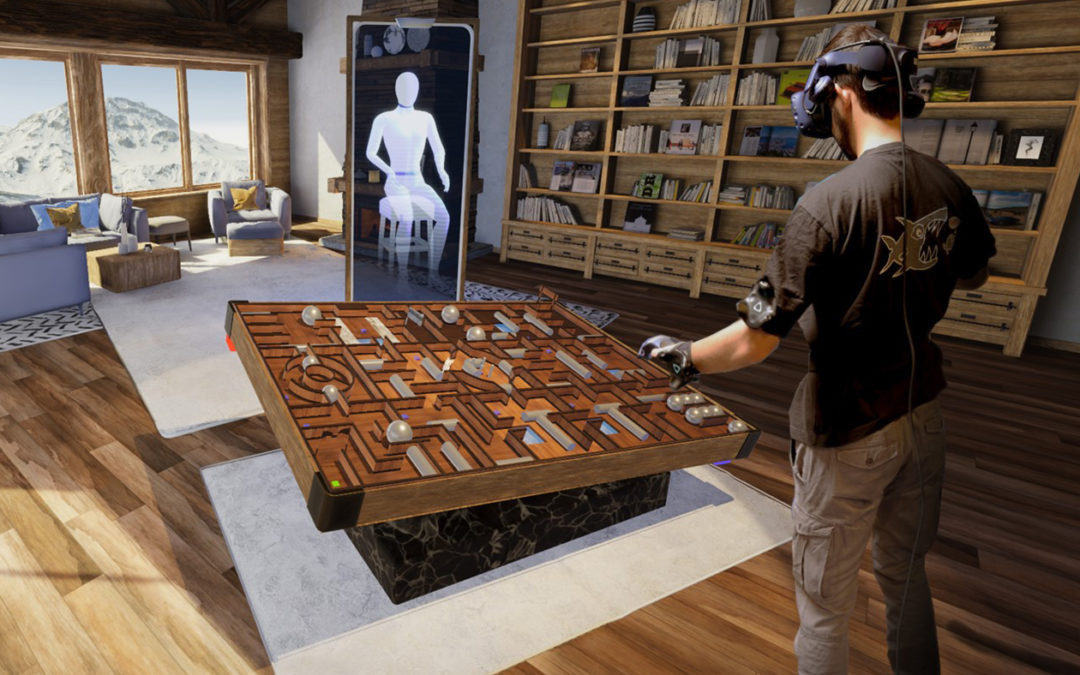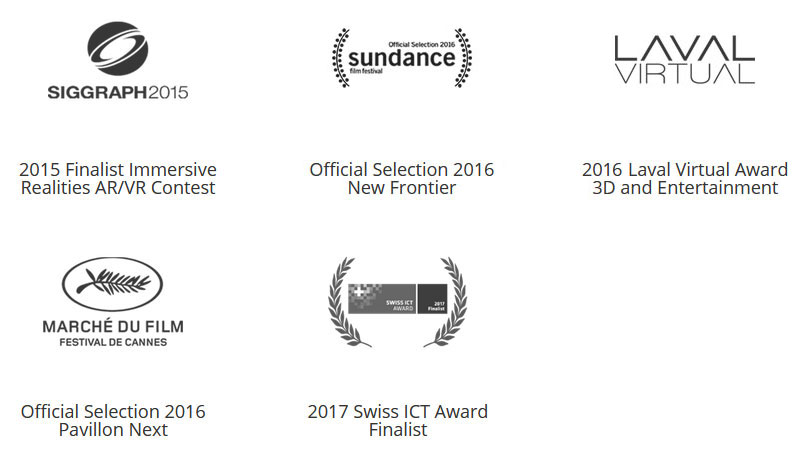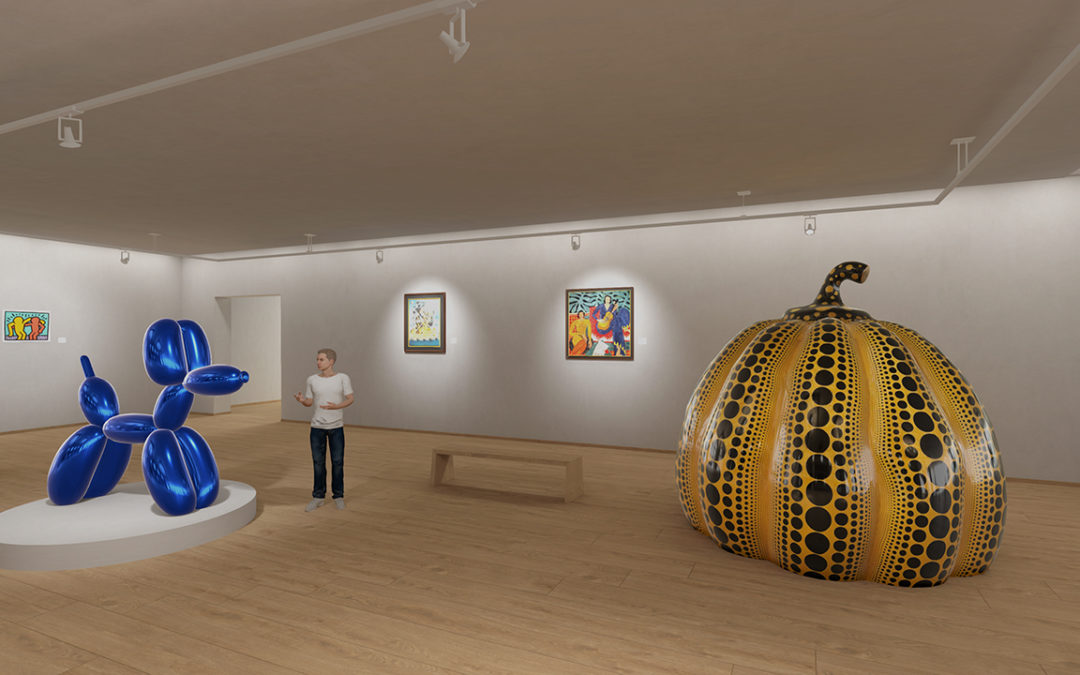
by artanim | Oct 29, 2025
Project Info
Start date:
January 2025
End date:
December 2026
Funding:
–
Coordinator:
Artanim

Summary
Imagine yourself inside a museum environment, whether real or entirely virtual. The elegant space is filled with fascinating works of art, some which you immediately recognize, but who was the artist again? And others grab your attention but are entirely unfamiliar. If only someone was around to tell you about the artists behind the works of art or provide you with details on the works themselves. Thankfully a virtual museum guide is in the room with you.
One of the drawbacks of more traditional approaches to such a museum guide scenario is the need to establish all the possible questions and responses up front, quickly leading to intractable production constraints, and an end-result that while informative may feel unnatural or robotic given that it’s entirely predetermined. The goal of our CurateXR project is to study how a modern-day generative AI chatbot backed by a Large Language Model (LLM) can be used to provide a real-time and entirely natural means of interacting with a virtual agent in such virtual (VR) or augmented reality (AR) scenarios. Powered by an animation system making use of Motion Matching and pathfinding to naturally navigate the space, the guide will happily stroll along with you.
All interactions happen through natural speech. Just ask any question you may have, and the guide will reply without delay, taking into consideration the context of the space it has been provided with up front, as well as real-time contextual clues provided to it such as your location and the artwork you’re looking at. Not only will the guide engage in a natural conversation with you, but if you feel more comfortable speaking in another language, just ask him to do so. The use of a generative AI chatbot resolves many issues around the barriers to entry users may feel when interacting with extended reality applications for the first time, and it provides a level of accessibility which is hard to replicate otherwise.
Generative AI chatbots aren’t just limited to conversations. They have the ability to turn your words into concrete actions. To demonstrate this, at one end of the museum space you will find a virtual sculpture experience, controlled by another agent. Through natural speech you are not just able to summon three-dimensional shapes in your desired color, but you can have them move as you desire. And if you’re not satisfied with the results you achieved, there is no need to start from scratch. Just inform your virtual helper about what changes you would like to make, and you’ll see the relevant updates happen before your eyes.
Integrating a generative AI chatbot into your VR scenarios can level up your experience by providing an entirely natural means of engagement. Just put your headset on and go. And while the museum scenario was chosen as the use-case for this project, the potential range of scenarios that can be supported – from training and education to rehabilitation, entertainment and many more – is virtually endless.

by artanim | Feb 20, 2024
Project Info
Start date:
January 2024
End date:
December 2027
Funding:
EU Commission (GAP-101135025) and SERI (REF-1131-52104)
Coordinator:
Fundació i2CAT
Website:
https://presence-xr.eu/
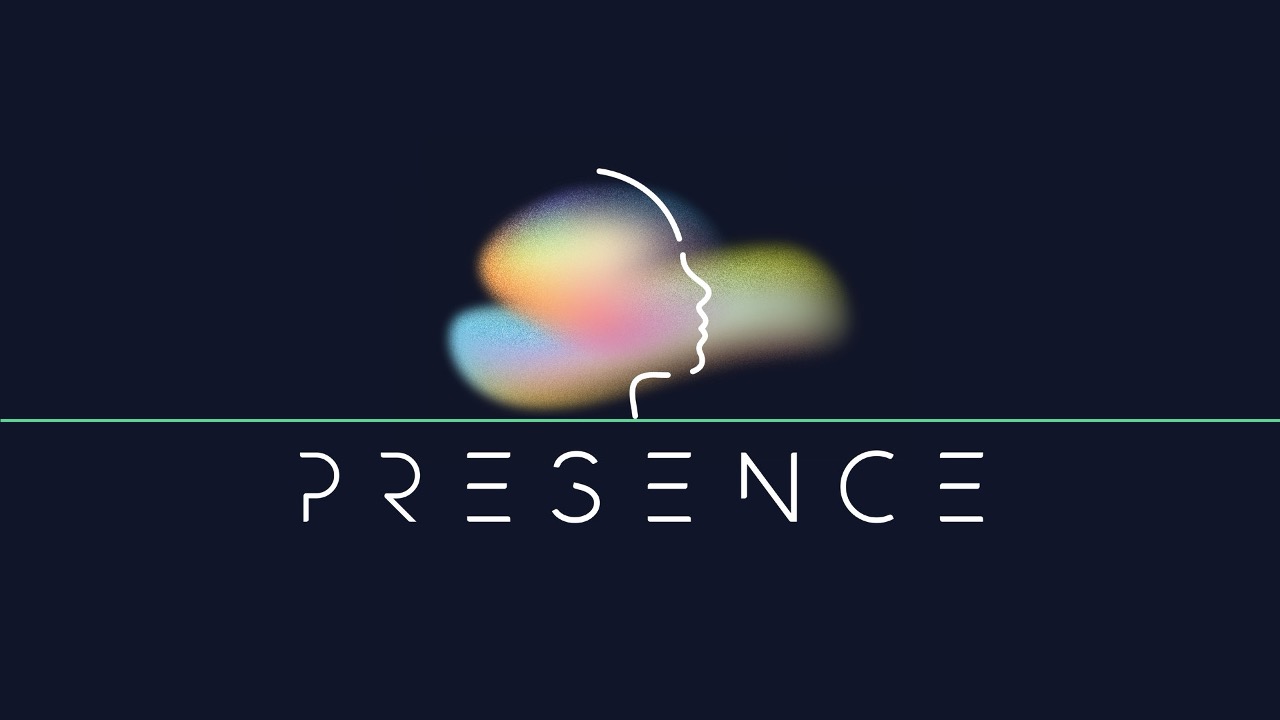
Summary
The concept of presence can be understood as a synthesis of interrelated psychophysical ingredients where multiple perceptual dimensions intervene. A better understanding of how to impact specific aspects such as plausibility, the illusion that virtual events are really happening, co-presence, the illusion of being with others, or place illusion, the feeling of being there, is key to improve the quality of XR experiences. The availability and performance of advanced technologies will let us reach high levels of presence in XR, essential to get us closer than ever to the old VR dream: to be anywhere, doing anything, together with others from any place. The PRESENCE project will impact multiple dimensions of presence in physical-digital worlds, addressing three main challenges: i) how to create realistic visual interactions among remote humans, delivering high-end holoportation paradigms based on live volumetric video capturing, compression and optimization techniques under heterogeneous computation and network conditions; ii) how to provide realistic touch among remote users and synthetic objects, developing novel haptic systems and enabling spatial multi-device synchronization in multi-user scenarios; iii) how to produce realistic social interactions among avatars and agents, generating AI virtual humans, representing real users or AI agents.
The contribution of Artanim will focus on smart autonomous characters, which are able to generate physically-plausible behavior integrating the cues of avatars of human users or other autonomous characters in specific scenarios. Specific parameters will be studied, for the movement to respond plausibly to social cues such as interpersonal differences or to collaboration tasks. Interactive virtual agents may take into account the position of others to respect implicit proxemics rules by generating small step rotations, or if a user needs an object, the interactive virtual agents will grab and offer it.
Partners
Fundació i2Cat (Spain)
Actronika (France)
Universitaet Hamburg (Germany)
Ethniko Kentro Erevnas Kai Tehcnologikis Anapty (Greece)
Raytrix GMBH (Germany)
SenseGlove B.V. (Netherlands)
Go Touch VR SAS (France)
Didimo, S.A.(Portugal)
Vection Italy Srl (Italy)
Universitat de Barcelona (Spain)
Unity Technologies (Denmark)
Sound Holding B.V. (Netherlands)
Interuniversitair Micro-Electronica Centrum (Belgium)
Joanneum Research Forschungsgesellschaft MBH (Austria)
SyncVR Medical B.V. (Netherlands)
Zaubar UG (Haftungsbeschraenkt) (Germany)
Artanim
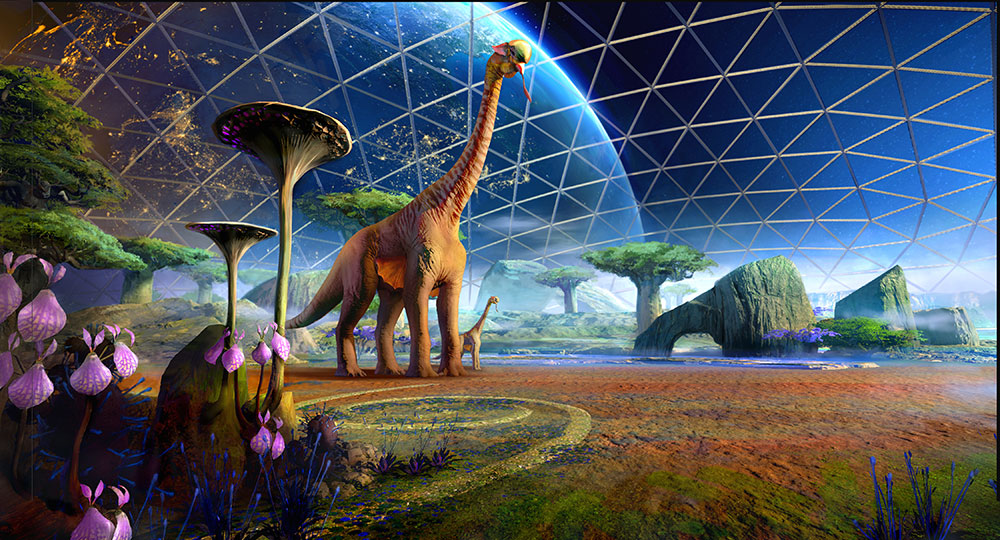
by artanim | Sep 23, 2021
Project Info
Start date:
April 2015
End date:
December 2025
Funding:
–
Coordinator:
Artanim
Summary
Artanim is the inventor and continuously develops since 2015 the VR technology driving Dreamscape Immersive. This multi-user immersive platform combines a 3D environment – which can be seen and heard through a VR headset – with a real-life stage set incorporating haptic feedback elements.
The user’s movements are sparsely captured in real time and translated into a full-body animation thanks to a deep understanding of body mechanics. Contrary to other static position VR systems, the platform allows up to eight users to truly feel immersed in a VR scene. They are rendered as characters (avatars) inside a computer generated world where they can move physically, interact with objects and other players, and truly experience worlds previously accessible only in their imagination. The bodies of the users thus become the interface between the real and virtual worlds.
The platform combines the following features:
- Wireless: complete freedom of movement across large spaces.
- Social: interactive multi-user experiences within a shared environment or across connected pods.
- Accurate: full-body and physical objects tracking with less than 1 millimeter deviation.
- Real-time: zero discernible lag eliminating most concerns of motion sickness.
- Flexible: SDK allowing content creators to easily create experiences for this particular platform.
This platform is leveraged by Dreamscape Immersive through their worldwide location-based VR entertainment centers, as well as through educational and training programs and other enterprise solutions.
The platform was also used to produce VR_I, the first ever choreographic work in immersive virtual reality, as well as Geneva 1850, a time traveling experience and historical reconstruction into the Geneva of 1850.
Related Publications
Chagué S, Charbonnier C.
Real Virtuality: A Multi-User Immersive Platform Connecting Real and Virtual Worlds,
VRIC 2016 Virtual Reality International Conference – Laval Virtual, Laval, France, ACM New York, NY, USA, March 2016.
PDF
Chagué S, Charbonnier C.
Digital Cloning for an Increased Feeling of Presence in Collaborative Virtual Reality Environments,
Proc. of 6th Int. Conf. on 3D Body Scanning Technologies, Lugano, Switzerland, October 2015.
PDF
Charbonnier C, Trouche V. Real Virtuality: Perspective offered by the Combination of Virtual Reality Headsets and Motion Capture, White Paper, August 2015.
PDF







